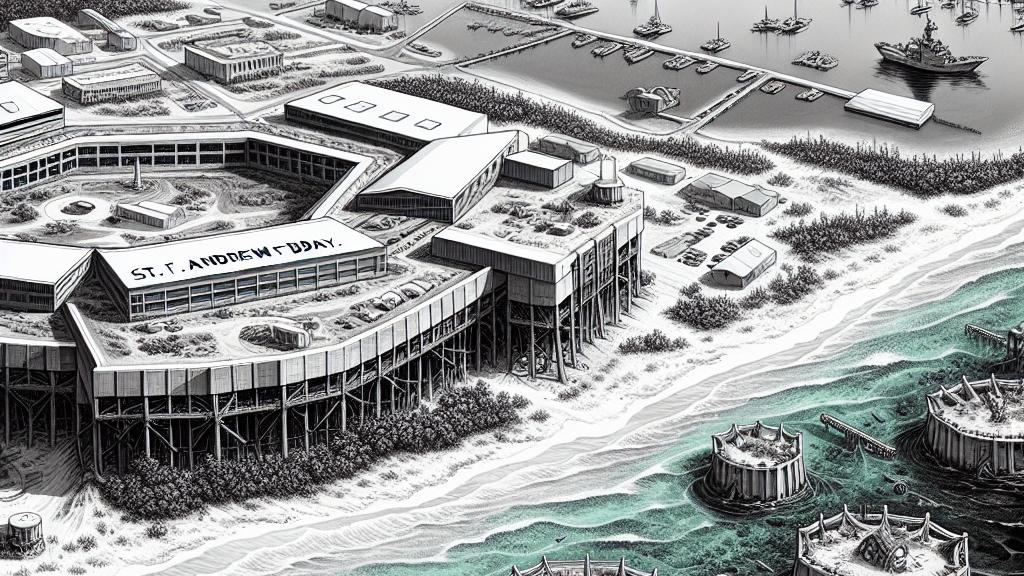Innovative Concrete Reef Structures to Protect Military Base from Coastal Erosion
Overview
- Cutting-edge concrete modules installed in Florida to enhance coastal resilience.
- These self-healing structures incorporate living oysters for ecological benefits.
- Led by Rutgers University, the project aims to shield Tyndall Air Force Base from climate-related threats.

The Critical Need for Proactive Coastal Defense
Situated against the backdrop of the stunning Florida Panhandle, Tyndall U.S. Air Force Base faces the relentless encroachment of coastal erosion and storm damage. The catastrophic effects of Hurricane Michael in 2018, which obliterated critical infrastructure and left a lasting scar on the region, highlighted the urgent need for effective protective measures. In light of this, Air Force officials have made a landmark decision to install advanced concrete reef structures in the serene waters of St. Andrew Bay. This strategic venture is not merely a defense mechanism; it symbolizes a proactive stance against the mounting threats posed by climate change, embodying innovation and resilience in action.
Revolutionary Design that Merges Nature and Engineering
At the forefront of this initiative is a groundbreaking design conceived by talented scientists at Rutgers University. The hybrid reef system consists of robust, specially-engineered concrete modules that are two feet square and weigh an impressive 450 pounds each. These modules serve a dual purpose; they provide a hard and durable substrate for oysters, allowing these remarkable organisms to thrive, while also enhancing the natural landscape over time. Envision a grand structure spanning 160 feet wide, composed of approximately 800 interconnected modules working in harmony. This reef is not only designed to absorb the pounding of waves but is also positioned to promote the flourishing of a vibrant marine ecosystem. By helping oysters establish themselves, these concrete cubes create not just a barrier, but a living shield that ultimately contributes to shoreline stability and ecological balance.
Collaborative Efforts Paving the Way for Future Innovations
This innovative project stands as a testament to collaboration, involving the expertise of over 60 researchers from diverse institutions working toward a common goal. Together, they strive to assess the capacity of these self-healing reef structures to withstand the volatile forces of nature. The experimental approach taken here could set a revolutionary precedent for coastal protection efforts globally. Picture a future where human-made designs complement and enhance natural ecosystems, creating a balanced relationship that benefits both military infrastructures and the environment. This ambitious undertaking not only aims to protect Tyndall Air Force Base but also provides a crucial blueprint for similar initiatives worldwide, demonstrating the power of merging technological advancement with sustainable practices in a bid to preserve our planet for future generations.

Loading...